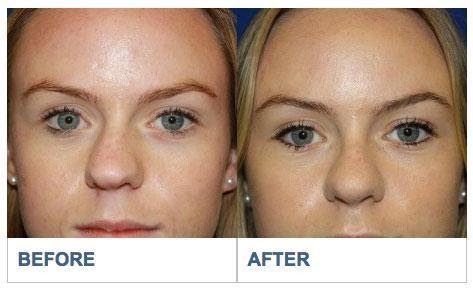
After undergoing a primary nostril job, it is necessary to revise a previous one. Sometimes patients are unhappy with their initial results and want to make adjustments to their nose. Revisions are also common due to breathing difficulties. These can be caused by an accident, small obstructions or other reasons. Revision results will vary depending on the patient's cosmetic preferences and health. Consider these factors before scheduling a revision on a previously done nose job.
Rhinoplasty
Rhinoplasty, a name that refers to the plastic surgery procedure of altering and reconstructing the nose, is common. Although there are many types, many people refer simply to it as a "nose job". Revision rhinoplasty is the most popular type of rhinoplasty. It can be done on children as well as adults. If you have trouble breathing through your nose, or if you are unhappy with your appearance, rhinoplasty is an excellent option.

Nasal hump excision
Nasal hump removal is used to remove the nasal bump and create straight nostrils. The hump consists of the cartilage and bone above the scalloped grey line. The Jie Pou Dao cuts the cartilage portion to form the hump. To remove the nasal hump bulk, the surgeon uses an osteotome. The bone-scraping rasps below are used to create the bone flap.
Paramedian forehead flip
The paramedian forehead fold is a type or interpolated flap for facial reconstruction. It can be used to correct large facial defects. This type of nose job is often used to correct large deformities such as the cleft lip and cleft palate. This option is available to patients who smoke or suffer from other conditions that may prevent the donor region from healing. Although there will be a scarring at the donor area, this procedure is much less invasive than other types.
Rhinoplasty cost
Rhinoplasty can be quite affordable but can be costly if performed by a prominent surgeon. A highly-respected surgeon will likely charge more for the procedure, than someone with no reputation. You can avoid this by researching the credentials of the surgeon and reading reviews from patients. While cost for rhinoplasty depends on the surgeon’s experience level and credentials, there are still other important factors to consider.

Recovery time following Rhinoplasty
Recovery time for rhinoplasty is dependent on how extensive the work was done and the patient's overall health. The average person will experience pain and swelling in the affected area for between two to six weeks after surgery. The swelling should diminish by the third day, and patients will be able return to work. Although the pain from rhinoplasty is usually short-term, in some cases, it can last as long as a whole year.